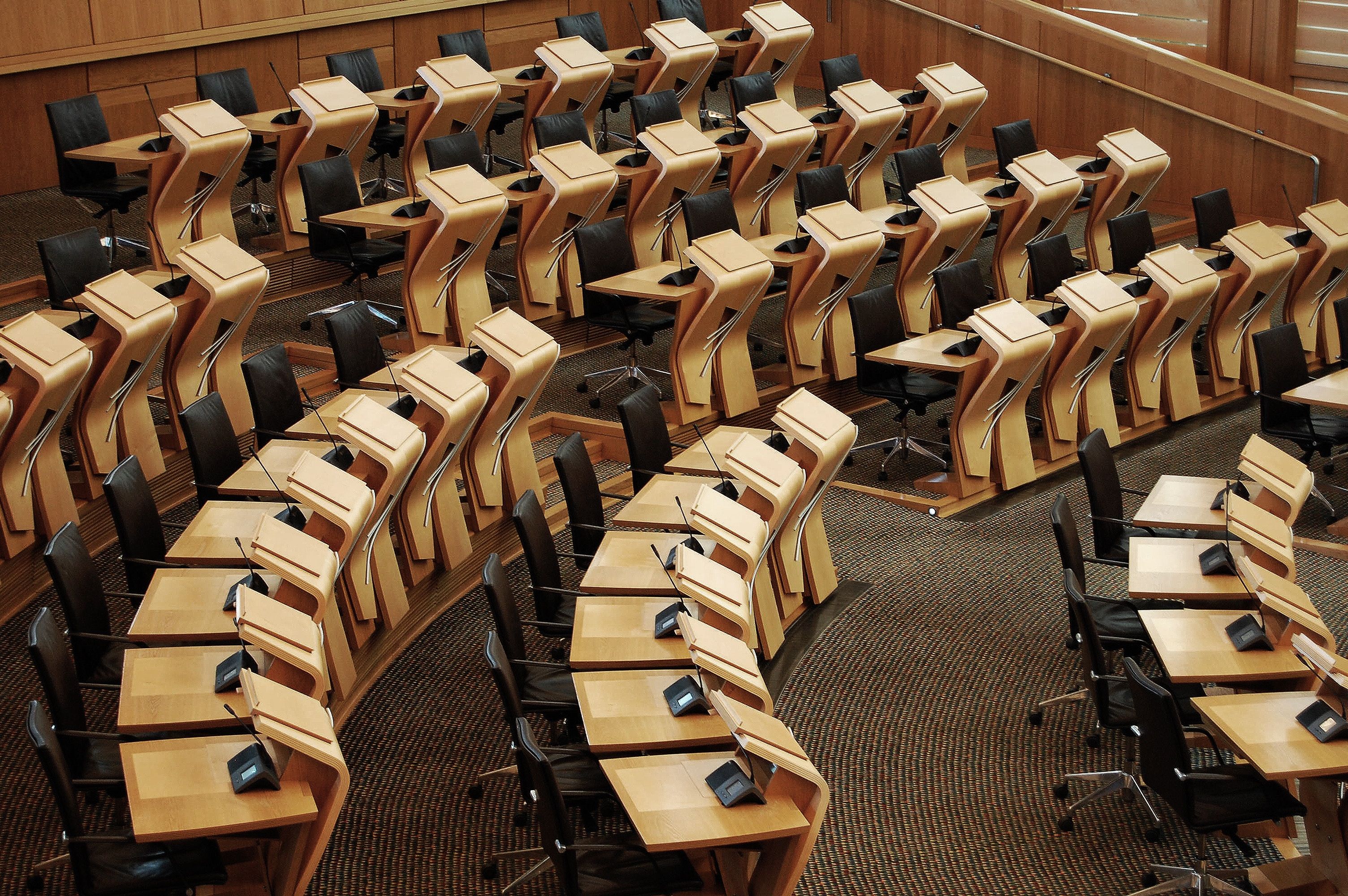Make bus travel free for all
The Scottish Government should make buses free for all to both combat the climate emergency, and reduce poverty and inequality.
Any attempt to meet our climate change goals must involve bold action to reduce private car use and drastically increase the number of journeys taken by public transport. It must also be recognised that over seventy percent of public transport journeys are made by bus, and that buses are an especially vital form of travel for those living in low-income areas.
Over 100 cities, more than half of them in Europe, have made their public transport free and all public transport has been free in the (small) country of Luxembourg since early 2020. Behavioural research confirms the effectiveness of free public transport in changing habits.171 In Scotland, early data shows that since the introduction of the concessionary bus travel scheme for under 22’s, over 50 million journeys have been made by young people under the scheme.172 It is clear that when cost is removed as a barrier, people use public transport and this consideration should be central in changing behaviour regarding transport.
As well as reducing carbon emissions, free bus travel has benefits for other policy areas. It supports increased access to job and educational opportunities, boosts the local economy through more expendable household income, and tackles isolation and loneliness leading to better mental health outcomes.173 For people living on low incomes, who rely heavily on bus services,174 these things can be harder won, and they stand to gain significantly from making our transport system more equitable as well as greener. In terms of wider government goals, free public transport will work towards reaching the child poverty targets.
An equitable transport system would tackle inequality. The gendered division of household labour and caring responsibilities means that women make more encumbered care-related journeys that may require multiple stops. Yet men are more likely to have a driving licence and less likely to live in a house without a car.175 A more gender-just transport system would move away from design around a default white, able-bodied, middle class male user, which can exacerbate inequality. Instead, it should enable a diversity of journeys, including care-related trips which are disproportionately taken by women using buses.
This policy would directly address the cost of living crisis for many, as well as improving air quality and health. Net Zero Nation have estimated that replacing car journeys with bus journeys can help reduce CO2 emissions by 42%.176
This of course must be coupled with tackling availability and accessibility, particularly in rural communities. A key principle would be to make sure of a quality service for the user, with the frequency and comprehensive coverage of the system maintained and improved compared to today.
Regarding cost, currently 55% of bus operator revenues in Scotland in 2021/22 came from public funding through concessionary travel reimbursement, Bus Service Operators Grant or supported services.177 This has slightly increased since the pandemic, but even before then, the average level of annual subsidy between 2006/07 and 2019/20 was 46%. Taking the 2021/22 level of subsidy as a basis for calculating the total investment needed to cover all operator revenue, gives a figure of just over £598m to cover total existing revenue. That represents an increase of £269m on the existing spend of £329m. By comparison the Scottish Government budget line for rail in 2022/23 is £1,396.9m and for motorways and trunk roads it is £855.8m. It is of course important to note that these costs will increase with increased usage (which free bus travel would incentivise) however these costs are used to offset revenue loss from private companies. Public ownership would change this model and its economics.
As a minimum, Scottish Government should financially support free bus trials in two Scottish cities, with urgent analysis to learn lessons with a view to expanding as widely as possible, as recommended by the Just Transition Commission,178 and extend free bus travel to people on low incomes, including asylum seekers and people with no recourse to public funds.
The next step beyond free bus travel is to make all public transport in Scotland free. Beginning with bus travel we can help to lift people out of poverty and reduce our carbon footprint.
For further information:
- COP26 Blog – Suzi Murning on Transport, SCCS, 2021, https://www.stopclimatechaos.scot/cop26-blog-suzi-murning-on-transport/
- Public Transport, Private Profit – The Human Cost of Privatizing Buses in the United Kingdom, Centre for Human Rights & Global Justice, NYU, 2021, https://chrgj.org/wp-content/uploads/2021/07/Report-Public-Transport-Private-Profit.pdf
- Bus cuts across Scotland, Get Glasgow Moving, February 2023, https://www.getglasgowmoving. org/news/buscuts/
- Towards Gender Inclusive and Sustainable Transport Systems, Womens’ Budget Group, 2021, https://wbg.org.uk/analysis/uk-policy-briefings/towards-gender-inclusive-and-sustainabletransport-systems/
- Government urged to make buses free to all by 2025 in net zero blueprint, Energy Live News, 2021, https://www.energylivenews.com/2021/07/14/government-urged-to-make-buses-free-to-all-by-2025-in-net-zero-blueprint/
- Everyone Aboard! Campaign page, Poverty Alliance, 2023, https://www.povertyalliance.org/ campaigns-projects/everyone-aboard/
- Glaswegians call for free public transport, FoE Scotland, 2021, https://foe.scot/press-release/ glaswegians-call-for-free-public-transport/
- Access to bus services, Transform Scotland, May 2023, https://transform.scot/wp-content/ uploads/2023/05/2023-05-16-Access-to-Bus-Services-debate-Transform-Scotland-briefing-paper.pdf
The effects of a financial incentive on motives and intentions to commute to work with public transport in the short and long term, Journal of Environmental Psychology, 2021, https://www.sciencedirect.com/science/article/pii/S0272494421001717
Over 50 million free journeys made by under 22s, Transport Scotland, 2023, https://www.transport.gov.scot/news/over-50-million-freejourneys- made-by-under-22s/
Sustainability Mobility (2021) Free public transportation: Why we need it, and examples from Korean and European cities, https://sustainablemobility.iclei.org/free-public-transportation/
Addressing transport barriers to work in low income neighbourhoods, Sheffield Hallam University, 2017, http://shura.shu.ac.uk/16162/1/jrfaddressing-transport-barriers.pdf
Scottish Transport Statistics – Road transport vehicles, Transport Scotland, 2020, https://www.transport.gov.scot/publication/scottishtransport- statistics-no-39-2020-edition/chapter-1-road-transport-vehicles/
Net Zero Scotland (Undated) Benefits of Public Transport, https://www.netzeronation.scot/take-action/public-transport/ benefits-public-transport
Transport Scotland (2022) Scottish Transport Statistics 2022. Available at: https://www.transport.gov.scot/publication/scottish-transportstatistics- 2022/chapter-02-bus-and-coach-travel/
Just Transition Commission: A national mission for a fairer, greener Scotland, 2021, https://www.gov.scot/binaries/content/documents/ govscot/publications/advice-and-guidance/2021/03/transition-commission-national-mission-fairer-greener-scotland/documents/ transition-commission-national-mission-fairer-greener-scotland/transition-commission-national-mission-fairer-greener-scotland/ govscot%3Adocument/transition-commission-national-mission-fairer-greener-scotland.pdf

